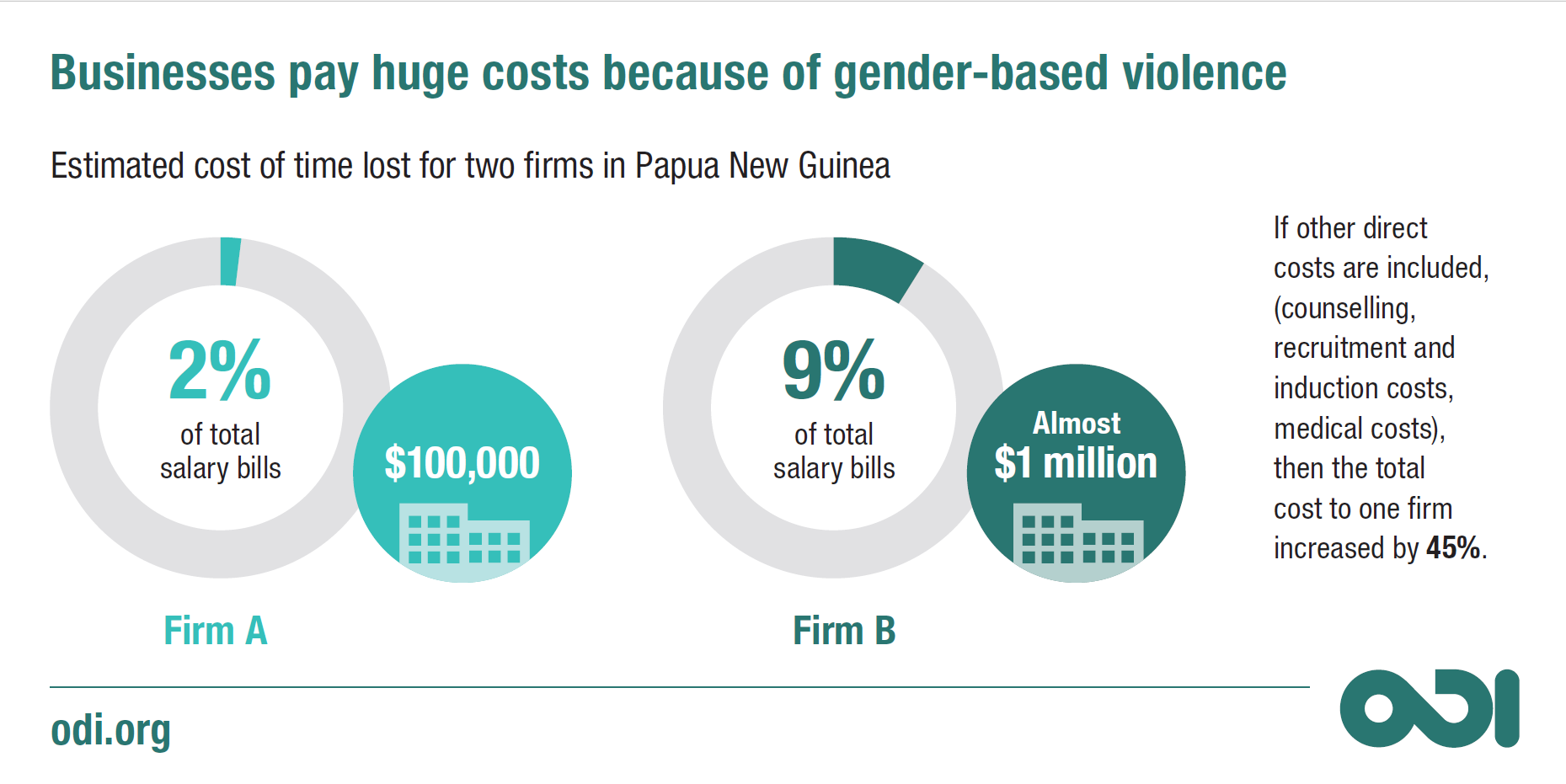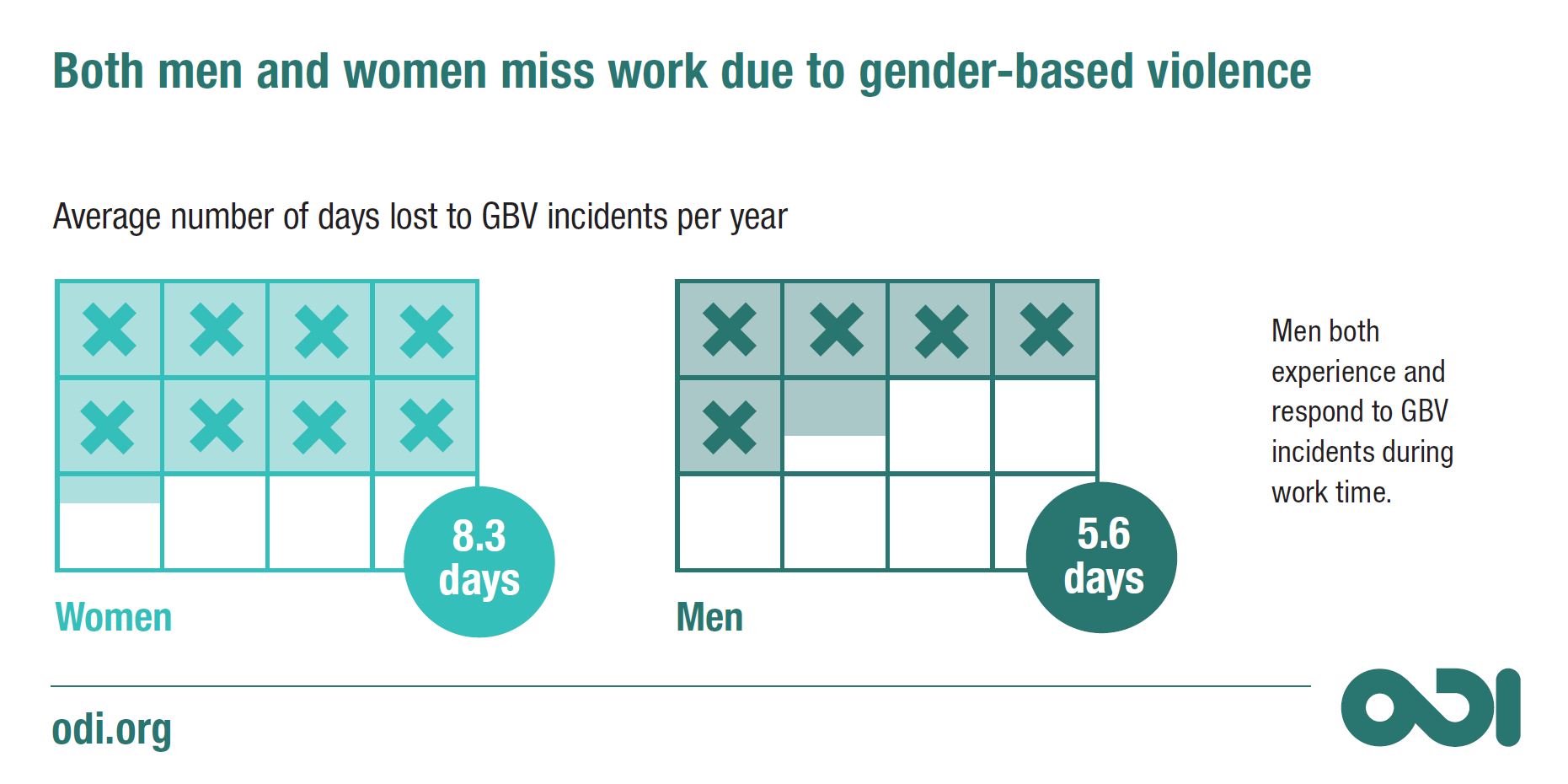Last week, the latest global report from Human Rights Watch ranked Papua New Guinea as the most dangerous place in the world to be a woman. It is a country where 70% of women will be raped or assaulted in their lifetime.
The silent crisis of gender-based violence (GBV), which affects both men and women, not only has terrible consequences for the individuals concerned, it’s also holding back progress for the whole island state.
Studies put the cost of domestic violence in Uganda and Nicaragua at around 1.6% of GDP, while a more comprehensive study suggests the long-term impacts could be as much as 10% in the UK. Although these figures are startling, they are abstract and unlikely to move businesses to play their part. In fact, the private sector is all too often entirely excluded from the debate on GBV, despite its capacity to make a big difference.
I believe we need to make the business case for urgent action on GBV and blow away the stigma of businesses talking about an issue that has such wide-reaching social and economic impacts. To do this, we need to take a sector-level approach to counting the cost of GBV, which is both cheaper and easier to do than looking at the economy as a whole – and the final sums will resonate more strongly with businesses.
To help with this, we have assembled a tool that provides clear steps and guidelines for conducting a costing assessment at the firm or sector level. Trialing the tool in Papua New Guinea, we found that the crisis is costing businesses up to AUD $1.5m a year, losing an average of 11 days due to staff absences. In the firms looked at, losses to total operating costs ranged from 2% to 9%.
This study and the associated toolkit represent just a starting point; we need much more evidence to make the case, beginning with a focus on the following four areas:
1. A comprehensive review of existing GBV research
We need to properly reflect on the findings of research on this topic to highlight the significant costs for individual businesses and sectors. Such evidence will help us make a compelling case to donors, as well as directly appealing to business – both in terms of accessing private finance, and to engage businesses in the design and management of GBV responses.
2. New, low-cost analysis of the business costs
We could use the toolkit to assess the firm or sector level costs associated with GBV. This would provide more of a local ‘carrot’ (savings and profit margin) than evidence that is aggregated and used at the national level. Such research should be conducted alongside broader GDP-based costing approaches.
3. Find ways to support business involvement
We need to look at ways to subsidise or facilitate the involvement of companies in costing studies. Perhaps a good way to sell the idea would be to position it in the growth or innovation arena. One place to start could be to hone in on a relatively definable sectors, such as extractive industries or tourism.
4. Examine the cost to the public sector
The costs we found to the private sector are bound to extend to the public sector and its ability to function. This may be too political for governments to engage with, but it is worth looking into, especially given the almost total lack of evidence in this area.
In March, the 60th UN Commission on the Status of Women – the leading intergovernmental body promoting gender equality globally – offers a major opportunity to put business engagement on the GBV agenda. One entry point is the 57th CSW agreement, which looked to ‘encourage private sector investment in programmes, campaigns and strategies… including sexual harassment at the workplace.’ A focus on looking at the costs of GBV to businesses is also part of a broader agenda (see the Secretary General’s 2006 report on GBV, page 108).
We have to show businesses that it’s in their own self-interest to act, and that talking about GBV can be good for business, as well as society and the economy. To do this, we need to talk the language of business – numbers – and we need to involve the international community. GBV is not just a problem for social services and NGOs; it is on all of us to play our part, and business is no exception.


